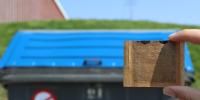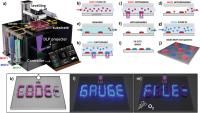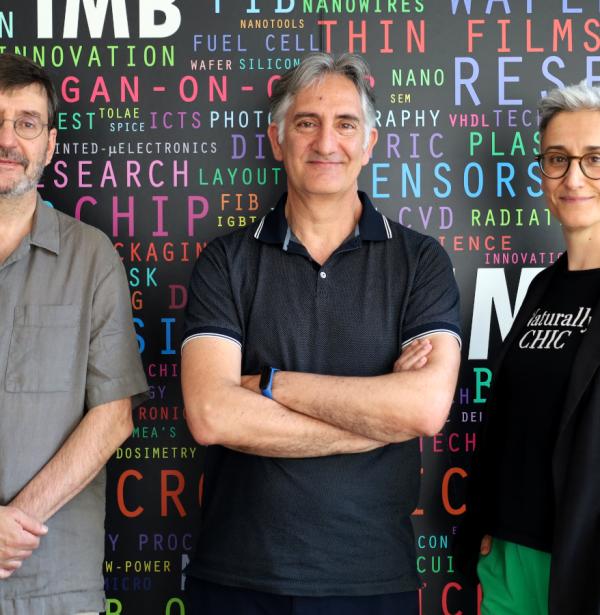Home
Notícies
Luis Fonseca, reelegit com a director de l'IMB-CNM per quatre anys més
Repeteix com a director de l'institut, que l'any passat va aconseguir l'acreditació d'excel·lència María de Maeztu. L'equip de vicedirecció científica es renova amb els investigadors Neus Sabaté i Francesc Pérez Murano.
Mètode innovador de l'IMB-CNM permet fabricar qbits semiconductors amb processos estàndard de microelectrònica
Un nou mètode, desenvolupat per investigadors de l’IMB-CNM, permet fabricar bits quàntics semiconductors amb alta precisió i baix cost, amb potencial per a la producció industrial.
Agenda
Highlights

Internet-of-Things (IoT) is considered one of the primary enablers of the next digital transformation wave. Generating and exchanging data between the increasing number of delocalized sensors comes with the need for high-performance portable power sources that also meet environmental and social responsibility standards. This article presents a portable power source to meet the energy requirements of IoT devices in the smart packaging sector that has been designed-by-purpose in an ecologically benign way since the early development stage. To minimize the environmental impact throughout its life cycle, the battery follows the value chain of paper and cardboard, from material sourcing to disposability. Naturally abundant materials, such as cellulose derivates and alginate biopolymers, are prioritized to create the separator and contain the redox species. Manufacturing techniques, easily implementable in the packaging industry, are used to fabricate an adhesive label-like battery (based on layered components) and engrave the current collectors, via laser-induced graphene. The prototype's energy adaptation capability is demonstrated by directly powering two applications particularly appealing for smart packaging, i.e., a printed electrochromic display and a wireless tracker device. Once depleted, the battery is compatible with paper and cardboard recycling standardized processes. The reconceptualization of the whole battery life cycle leads to the generation of a disruptive power source concept that aims to be an enabler of a sustainable digitalization of society.
Designed-by-purpose power sources: a cardboard primary battery for smart packaging. Energy and Environmental Science. DOI: 10.1039/D4EE00306C

Patterning Metal-Organic Frameworks (MOFs) is essential for their use in sensing, electronics, photonics, and encryption technologies. However, current lithography methods are limited in their ability to pattern more than two MOFs, hindering the potential for creating advanced multifunctional surfaces. Additionally, balancing design flexibility, simplicity, and cost often results in compromises. This study addresses these challenges by combining Digital-Light Processing (DLP) with a capillary-assisted stop-flow system to enable multimaterial MOF patterning. It demonstrates the desktop fabrication of multiplexed arbitrary micropatterns across cm-scale areas while preserving the MOF's pore accessibility. The ink, consisting of a MOF crystal suspension in a low volatile solvent, a mixture of high molecular weight oligomers, and a photoinitiator, is confined by capillarity in the DLP projection area and quickly exchanged using syringe pumps. The versatility of this method is demonstrated by the direct printing of a ZIF-8-based luminescent oxygen sensor, a 5-component dynamic information concealment method, and a PCN-224-based colorimetric sensor for amines, covering disparate pore and analyte sizes. The multi-MOF capabilities, simplicity, and accessibility of this strategy pave the way for the facile exploration of MOF materials across a wide range of applications, with the potential to significantly accelerate the design-to-application cycle of MOF-based devices.
C. Carbonell, M. Linares-Moreau, S. M. Borisov, P. Falcaro, Multimaterial Digital-Light Processing of Metal-Organic Framework (MOF) Composites: A Versatile Tool for the Rapid Microfabrication of MOF-Based Devices. Adv. Mater. 2024, 2408770. DOI: 10.1002/adma.202408770





